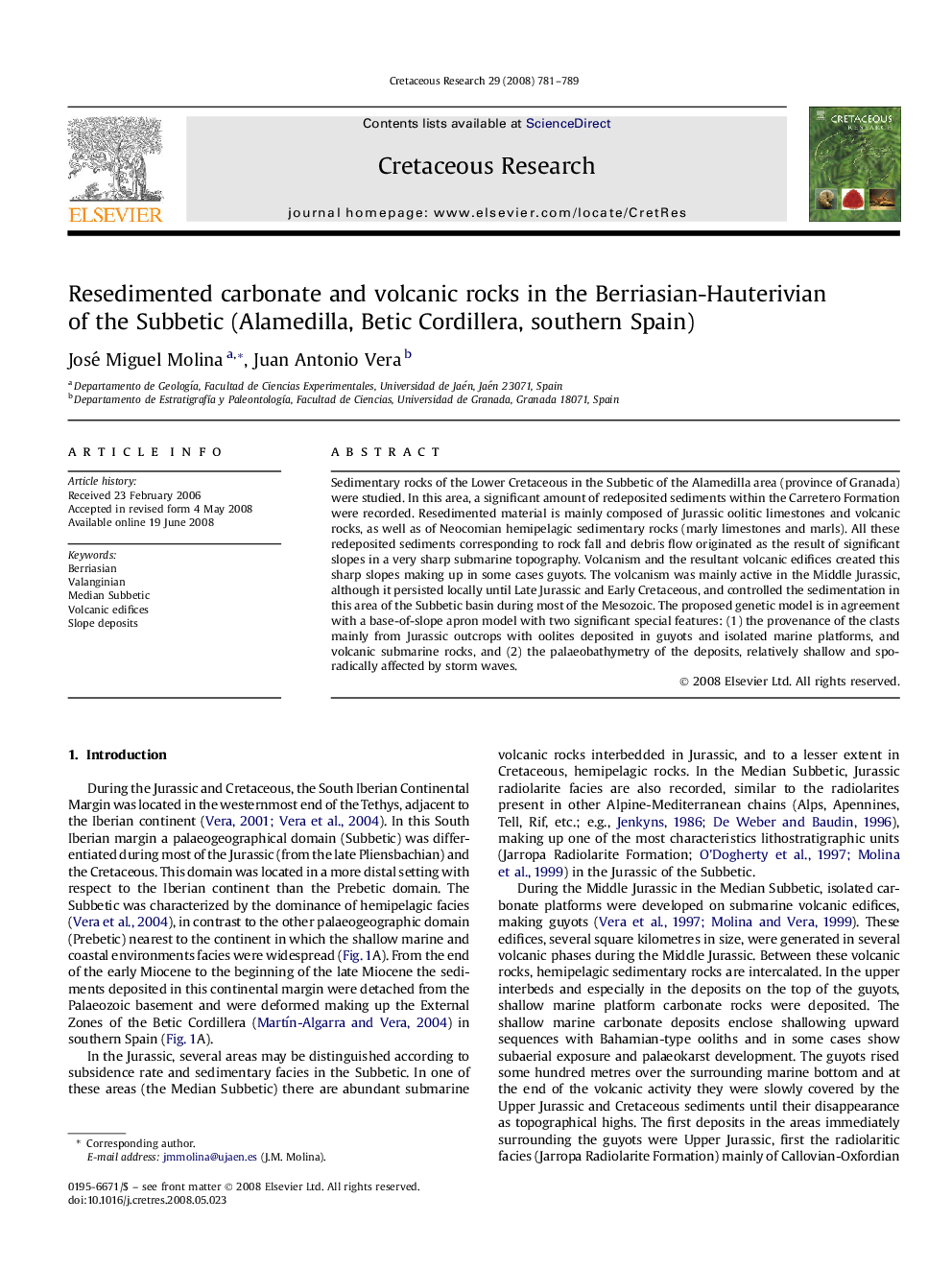| Article ID | Journal | Published Year | Pages | File Type |
|---|---|---|---|---|
| 4747694 | Cretaceous Research | 2008 | 9 Pages |
Sedimentary rocks of the Lower Cretaceous in the Subbetic of the Alamedilla area (province of Granada) were studied. In this area, a significant amount of redeposited sediments within the Carretero Formation were recorded. Resedimented material is mainly composed of Jurassic oolitic limestones and volcanic rocks, as well as of Neocomian hemipelagic sedimentary rocks (marly limestones and marls). All these redeposited sediments corresponding to rock fall and debris flow originated as the result of significant slopes in a very sharp submarine topography. Volcanism and the resultant volcanic edifices created this sharp slopes making up in some cases guyots. The volcanism was mainly active in the Middle Jurassic, although it persisted locally until Late Jurassic and Early Cretaceous, and controlled the sedimentation in this area of the Subbetic basin during most of the Mesozoic. The proposed genetic model is in agreement with a base-of-slope apron model with two significant special features: (1) the provenance of the clasts mainly from Jurassic outcrops with oolites deposited in guyots and isolated marine platforms, and volcanic submarine rocks, and (2) the palaeobathymetry of the deposits, relatively shallow and sporadically affected by storm waves.
